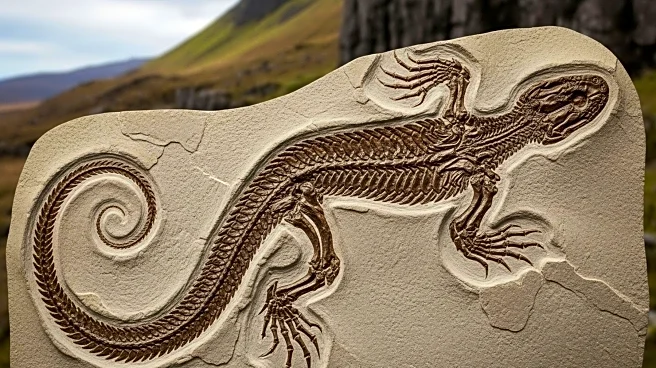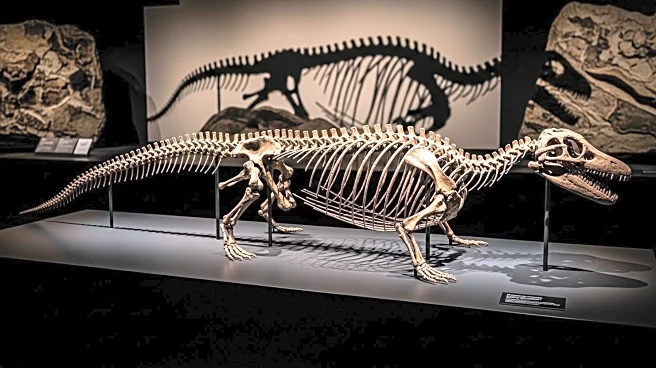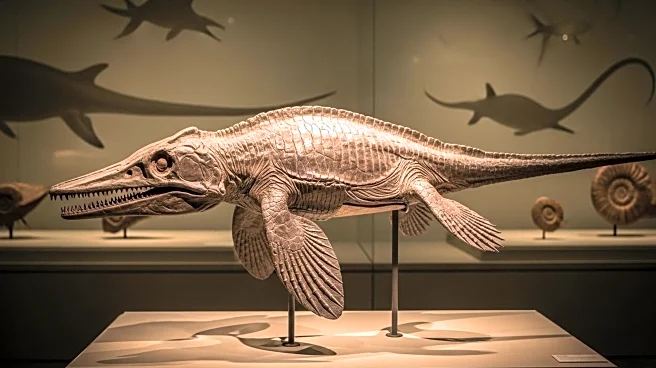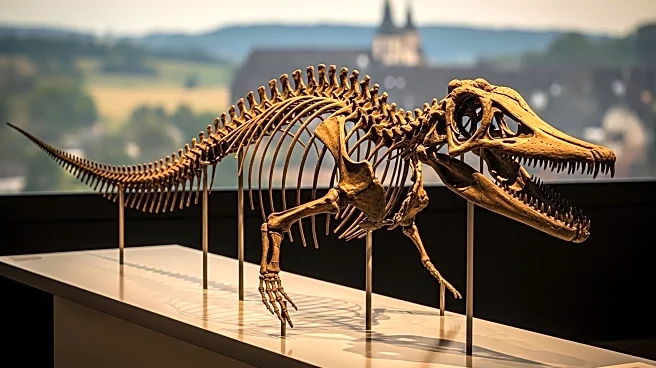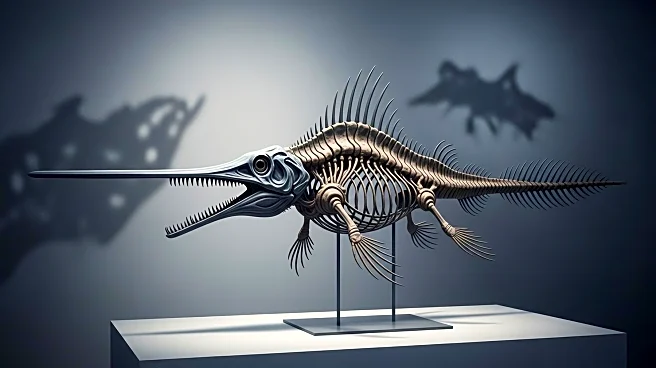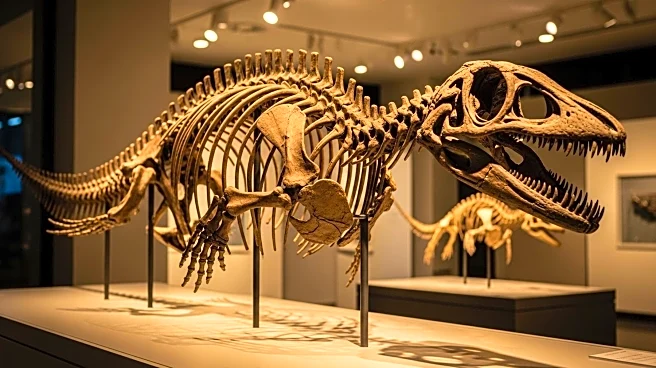What is the story about?
What's Happening?
A fossilized skeleton of a Jurassic reptile, Breugnathair elgolensis, has been discovered on Scotland's Isle of Skye. This creature, part lizard and part snake, lived 167 million years ago and had snake-like teeth for hunting prey. The fossil was found near the village of Elgol and is named the "false snake of Elgol" due to its unique anatomy. B. elgolensis had a snake-like jaw and curved teeth similar to a python, but with a short body and fully formed limbs like a lizard. The discovery could change the understanding of early snake evolution, as it belonged to a Squamata sub-group called Parviraptoridae.
Why It's Important?
The discovery of Breugnathair elgolensis provides valuable insights into the evolutionary history of snakes and lizards. Understanding the anatomy and characteristics of this ancient reptile can help scientists piece together the evolutionary paths of Squamata, a group that includes lizards and snakes. This fossil challenges previous assumptions about early snake evolution and highlights the complexity of evolutionary processes. The findings contribute to paleontology and evolutionary biology, offering a glimpse into the diversity of life during the Jurassic period and the evolutionary adaptations that shaped modern reptiles.
AI Generated Content
Do you find this article useful?
